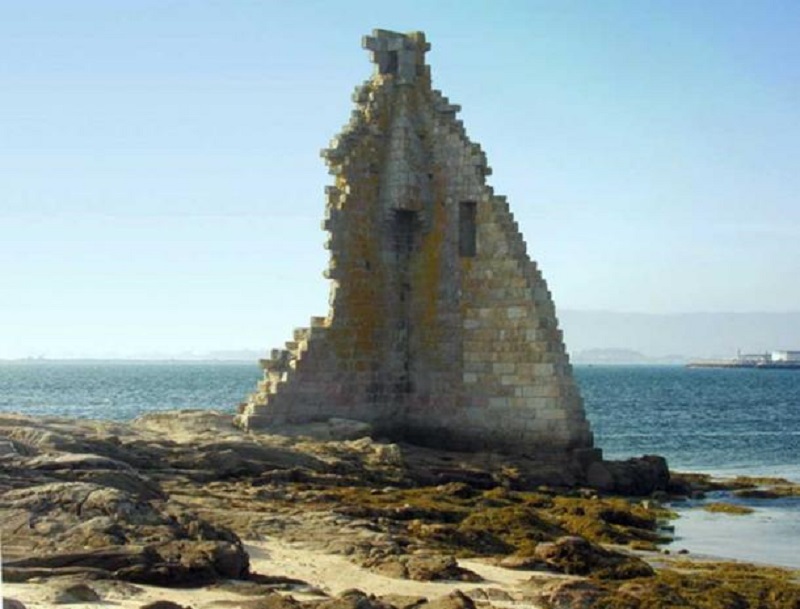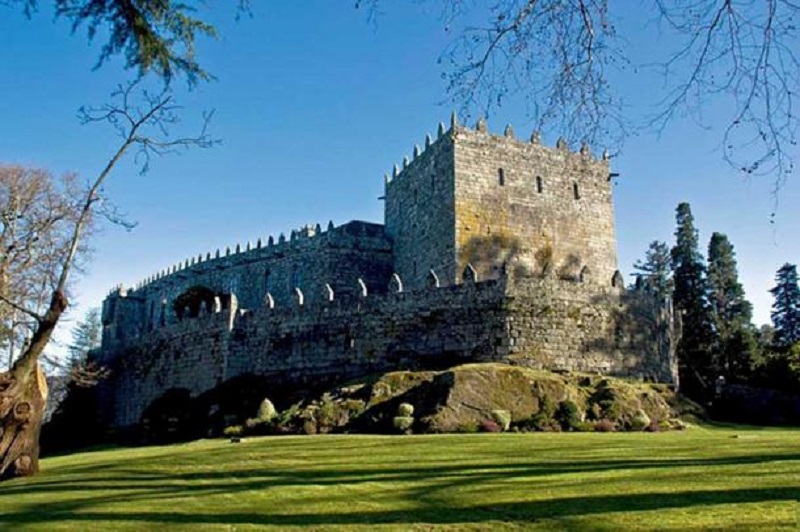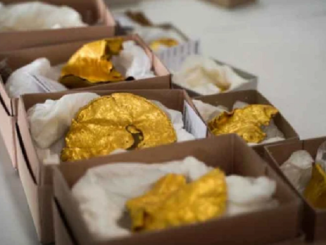The tower ruins hidden in a bay near the Atlantic Ocean are one of the greatest treasures of a small community in Cambados, Galicia, Spain. The stones remember battles with Vikings and other fierce warriors in history. Now they remind those who visit of the courage of the Galician people.
Guard tower
Cambados is a small town in the district of Pontevedra. It is famous for producing the best white wine in Spain’s Galicia region, called Albariño. Furthermore, this is also the home of many extremely talented writers and artists. But the site also witnesses fights that will make your blood run cold. That’s where many ships came to plunder the town. However, the tower is a powerful weapon against those enemies. Torre de Sadurniño is also a lighthouse that helps friendly ships reach the harbor safely.
The tower is located on the Ria de Arousa, where the surrounding land protects it somewhat from the dangerous waves of the Atlantic Ocean. However, the tower’s location also allows enemies to easily attack it.
Torre de San Sadurniño. (Contando Estrelas / CC BY SA 2.0 )
Lighthouses and towers to protect towns from attacks from the sea have always been a very important part of urbanization in Galicia. They are not only very useful buildings but also symbols of social prestige. Even now, people like to see them as monuments depicting the greatness of the Galician people and their historical strength in war. The most famous of these towers is the Torre de Hercules, located in A Coruna since ancient times. It was built by order of Gaius Julius Caesar, who arrived in Galicia in 61 BC.

Torre de Hercules. (EDMAR LASTRA CASTILLEJOS/ CC BY SA 3.0 )
Legendary tower
Torre de San Sadurniño was built in the 8th or 9th century AD, but it was probably created on the site of an even older structure. Researchers who have examined the site show that the tower was first built by the Romans or Phoenicians. Both ancient civilizations existed in Galicia, however the Roman impact was stronger.
Countless battles were fought using the tower. Local stories discuss various sieges and attempts to rob the town by the Vikings. The arrival of Norse tribes created a big problem during the early Middle Ages and some researchers suggest that the tower was created to protect the settlement from these raids. It was also a way to notify other villages and towns, from Cambados to Santiago de Compostela, of impending attacks. The tower can be seen from Catoira, a strategic location for the defense and protection of Santiago. Over the centuries it has been used against the Normans, barbarians and many others.
Torre de San Sadurniño. (Contando Estrelas/ CC BY SA 2.0 )
The tower was rebuilt in the 12th century when it was owned by the archbishop of Santiago de Compostela, Diego Gelmirez. The archbishop must buy it, otherwise he will lose the strategic position that protects his land. He decided that the old tower needed repair and it was reinforced using modern technology. It also had a purpose for other people at the time. They created a system of harbor infrastructure around the tower, allowing them to generate some wealth through trade in Cambados.

Romanesque medieval miniature painting by Didacus Gelmirici (Diego Gelmirez), from the illuminated manuscript of Tumbo de Toxosoutos (Galicia), 13th century. (Public domain)
Fall into ruins
During the 15th century, the Kingdom of Galicia faced a peasant uprising and the tower was destroyed in the battles of the Irmandiño Revolt (Irmandiño War), from 1466 to 1470. Records show that the tower was specifically destroyed in 1467.
It was acquired a few years later by the brother of the famous Galician rebel, Pedro Madruga. He rebuilt the tower. Over the centuries, the tower has been visited by many important people, such as bishops and political rulers.
Over time, the tower was rebuilt and it even has a chapel dedicated to the Virgin Mary. It has become a popular place to stay and enjoy the stunning views of the bay. In 1755, a major earthquake damaged the entire west coast of the Iberic Peninsula and the tower was damaged once again. No one decided to fix it then.
During the 18th century, it belonged to the Chariño–Sutomaior family, who also owned the remarkable medieval castle near Vigo today known as Soutomaior Castle. Possession of the remains of Torre San Sadurniño retained a certain prestige until the end of the 19th century. After that, the tower became public property and is now one of the most characteristic monuments in Cambados.
Soutomaor Castle (Xoan Anton/ CC BY SA 2.0 )
Galicians say that there were still some columns of the chapel left in the ruins of the 20th century tower. However, the rest of the structure was in such poor condition that it collapsed. Today, next to the Ria de Arousa, only a small part of the old monumental tower remains.
Archaeological excavations have never been completed in this area. Although archaeologists want to explore the site, they lack the funds to do so. For now, they are focused on at least protecting the existing part of Torre de San Sadurniño.

Torre de San Sadurniño. (Luis Miguel Bugallo Sánchez/ CC BY SA 3.0 )





